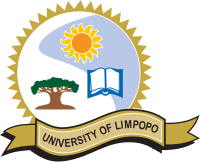Polokwane, also known as Pietersburg, is a city and the capital of the Limpopo Province of South Africa. It is South Africa's largest urban centre north of Gauteng. It was one of the host cities of the 2010 FIFA World Cup.

The University of the Witwatersrand, Johannesburg, commonly known as Wits University or Wits, is a multi-campus public research university situated in the northern areas of central Johannesburg, South Africa. The university has its roots in the mining industry, as do Johannesburg and the Witwatersrand in general. Founded in 1896 as the South African School of Mines in Kimberley, it is the third oldest South African university in continuous operation.

Limpopo is the northernmost province of South Africa. It is named after the Limpopo River, which forms the province's western and northern borders. The capital and largest city in the province is Polokwane, while the provincial legislature is situated in Lebowakgomo.

The R71 is a provincial route in Limpopo, South Africa that connects Polokwane with the Kruger National Park via the major towns of Tzaneen and Phalaborwa.

Tshwane University of Technology is a higher education institution in South Africa that came into being through a merger of three technikons — Technikon Northern Gauteng, Technikon North-West and Technikon Pretoria.
Sefako Mapogo Makgatho was born at GaMphahlele, in the Pietersburg district in the South African Republic. He was the son of Chief Kgorutlhe Josiah Makgatho of the Makgatho chieftaincy at GaMphahlele.
Lebowakgomo is the seat of the Lepelle-Nkumpi Local Municipality and was the capital of the former Bantustan of Lebowa. Lebowakgomo lies 45 km (28 mi) southeast of the Limpopo capital of Polokwane. The majority of Lebowakgomo's inhabitants speak SePedi.

Polokwane Municipality is a local municipality within the Capricorn District Municipality, in the Limpopo province of South Africa. It shares its name with the city of Polokwane.
Sefako Makgatho Health Sciences University is a university in Ga-Rankuwa, Gauteng Province, South Africa. Its current incarnation was formed on 1 January 2015. Previously it was known as Medical University of South Africa (MEDUNSA) and later as a campus of the University of Limpopo. It is named after South African ANC leader Sefako Makgatho. Since its name-change, students have colloquially referred to the institution using the acronym of its current name ("SMU") in a similar fashion to manner in which they used the acronym "MEDUNSA" to refer to the institution prior to the change of name.
Matšitšileng, also known as Wisconcin, is a village Next to Ga-Mathapo(Ga-Matlala) in the Mogalakwena Local Municipality of the Waterberg District Municipality of the Limpopo province of South Africa. It is situated about 110 km northwest of Polokwane and Mokopane.

The University of Pretoria is a multi-campus public research university in Pretoria, the administrative and de facto capital of South Africa. The university was established in 1908 as the Pretoria campus of the Johannesburg-based Transvaal University College and is the fourth South African institution in continuous operation to be awarded university status. The university has grown from the original 32 students in a single late Victorian house to approximately 53,000 in 2019. The university was built on seven suburban campuses on 1,190 hectares.
The R101 is a Regional Route in South Africa that is the designation for some of the old sections of roads that were previously the N1, prior to upgrading. It only has 2 sections, from Bellville to Worcester and from Johannesburg to Polokwane.
Dr George Mukhari Hospital is an Academic Hospital situated in the north of Pretoria near the township of Ga-Rankuwa. The previous name was Ga-Rankuwa Hospital. It is a teaching facility for the Sefako Makgatho Health Sciences University formerly known as Medical University of Southern Africa/University of Limpopo Medunsa Campus.
Mankweng, also called Turfloop is a township in Capricorn District Municipality in the Limpopo province of South Africa, and home to the University of Limpopo. Mankweng also known as Turfloop, is a university township, though relatively small to the likes of Grahamstown. It is located about 27 km east of Polokwane on the R71 road to Moria and Tzaneen.
Ga-Sebotse, also known as Pinkie, is a large village in Ga-Matlala in the Blouberg Local Municipality of the Capricorn District Municipality of the Limpopo province of South Africa. It is located 73 km northwest of Polokwane and 37 km southwest of Senwabarwana.
Makotopong is a village located 30 km outside the town of Polokwane within the province of Limpopo in South Africa. Makotopong falls under the Polokwane Local Municipality.
Phophi Constance Ramathuba is a South African politician and medical doctor. She has been the Limpopo MEC for Health and a Member of the Limpopo Provincial Legislature since May 2015. Ramathuba is a member of the African National Congress.
Masefako Clarah Dikgale is a South African politician who was a Member of the National Assembly of South Africa from 2019 to 2023. Prior to serving in the National Assembly, she served as a permanent delegate to the National Council of Provinces from Limpopo from 2009 to 2019. Dikgale is a member of the African National Congress.
Happy Joyce Mashamba was a South African politician and veteran of the African National Congress (ANC). At the time of her death, she was Member of the Executive Council (MEC) for Agriculture and Rural Development in the provincial government of Limpopo. She was also a member of the Central Committee of the South African Communist Party and a former member of the ANC National Executive Committee and the ANC Women's League National Executive Committee.






